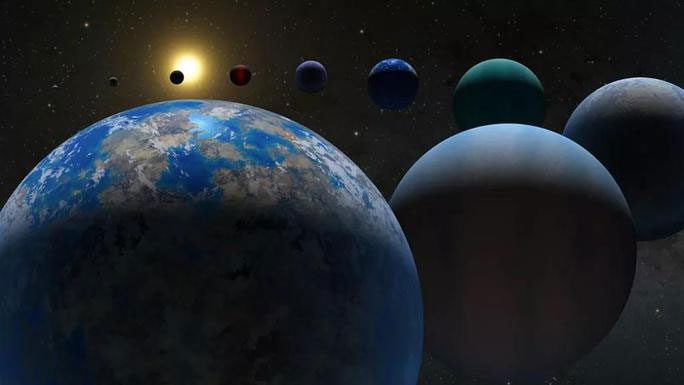According to Space, the project proposed by the Shanghai Astronomical Observatory (SAO) is set to take place this summer and will assist China in the race to find a “Second Earth”, a quest that the United States and European countries are also vigorously pursuing.
These will be planets that are Earth-sized, orbiting in a similar manner, revolving around sun-like stars—conditions that are essential for the potential emergence of life.

Earth and planets identified as being quite similar to Earth – (Image: NASA)
The space telescope named Earth 2.0, meaning “Earth Version 2.0”, will be located approximately 1.5 million kilometers from Earth, orbiting around the Sun-Earth Lagrange Point 2. The Lagrange Point, or “dancing point,” refers to positions in interplanetary space where an object experiences minimal gravitational influence from two large celestial bodies, providing the telescope a relatively quiet location to conduct its mission.
Earth 2.0 will be equipped with seven small telescopes that will cover the sky directed toward the center of the galaxy, attempting to capture signs of planets as they transit the space between their parent stars and Earth, causing changes in brightness.
This is also the most common method used by space agencies to hunt for exoplanets, as they are often too distant to be observed directly. Identifying planets with conditions similar to Earth is crucial, as it helps scientists worldwide narrow down the search for life.
“These planetary candidates can be further monitored using ground-based telescopes to determine their mass and density through radial velocity measurements, and some orbiting bright stars may be further tracked using spectroscopy”, said Professor Ge Jian from SAO in an email to Space.
The observation direction of Earth 2.0 coincides with the area that NASA’s Kepler has been monitoring for the past nine years; however, Earth 2.0 will have a significantly larger field of view, allowing it to capture a broader area and observe more stars. If all goes well, Earth 2.0 is expected to launch in 2026.
Kepler has observed half a million stars and 2,392 exoplanets during its remarkable mission.





















































